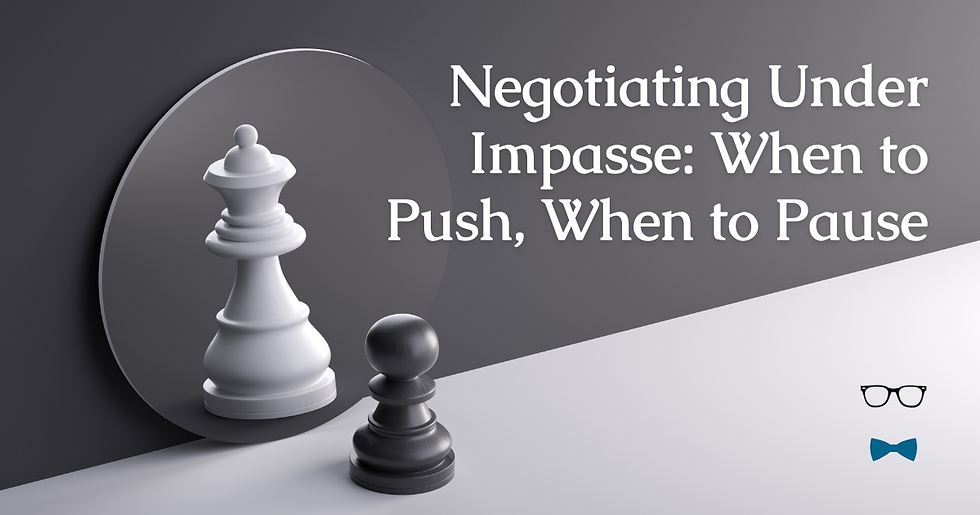How to Put Your Best Face Forward When Attending a Mediation Virtually
- Cooper Shattuck

- Jun 3
- 3 min read
We can argue the disadvantages of virtual mediation, but the reality is that they are here to stay. And as they become more commonplace, so too have the pitfalls of not being fully prepared for them. While the convenience of logging in from your office or home is undeniable, the informality can lead to unintended consequences, both in presentation and perception. I have dealt with some fantastic lawyers and great negotiators who shoot themselves in the foot by not recognizing the adjustments they need to make when appearing virtually. How you show up virtually matters just as much as it would if you were sitting across the table in person. Here’s how to put your best face forward—literally and figuratively—when attending mediation online.

1. Mind Your Background and Lighting
First impressions count, especially when you're not in the room to make up for it with a firm handshake and chit-chat.
Choose a neutral, uncluttered background. A distant wall, bookshelf, or office backdrop works well.
Avoid virtual backgrounds unless they’re subtle and don’t glitch with movement. You will notice it around the edge of your head.
Lighting should come from in front of you, not behind. Natural light or a ring light can make a big difference.
2. Frame Yourself Professionally
It’s called “face time” for a reason. Where you place the camera—and how you appear on screen—matters:
Center your face in the frame with your eyes about one-third down from the top. This means that you may not be able to use that fancy (and expensive) conference room camera that is 20 feet from you at the other end of the conference table – not effective!
Raise your camera to eye level to avoid the dreaded “under-chin” view or lower your camera to eye level to avoid the equally unappealing “surveillance camera” view.
3. Dress for the Mediation You Want
Would you wear that golf shirt to court? Probably not. Treat the mediation with the same respect unless everyone has discussed what to wear:
Wear business attire—at least from the waist up. You might shed the tie after the initial greeting, but at least start that way.
Solid colors look best on screen; avoid patterns that distract or blur.
4. Prepare Yourself, Your Client, and Your Tech Like It’s Your Opening Statement
The last thing you want is a glitch when you're making a key point. Before the mediation (log on early):
Test your connection on the platform being used (Zoom, Teams, etc.).
Use a stable internet connection—preferably wired, not wireless.
Restart your computer beforehand to avoid updates or slowdowns mid-session.
Have a backup plan—like a smartphone with the app installed—ready to go.
Make sure your client does the same if he or she won’t be with you.
5. Stay Engaged and Present
Even when you’re muted or off-camera, assume you’re visible and audible.
Nod, smile, and listen attentively. These small cues show respect and engagement.
Mute only when necessary, and unmute promptly to speak without delays.
Avoid checking emails or your phone—it’s obvious and comes across as disinterest.
Sit still and avoid distractions or multitasking that may appear disengaged.
6. Use Breakout Rooms Strategically
Virtual platforms offer breakout rooms to simulate caucus discussions. That is where you will spend most of your time in virtual mediations. Use them wisely:
Be clear with your mediator about when you want private time. Adjust your view so that you can see who all is in your breakout room. The mediator (meeting host) doesn’t have to knock to enter. You don’t have to give permission for them to enter. If you need private time, tell the mediator that you will message through the platform or text him when you are ready for him to return. In fact, this process works well for caucuses too. The mediator can text before he returns.
Be ready for the mediator when he returns. Be there. Waiting. This shows respect for the process.






Comments